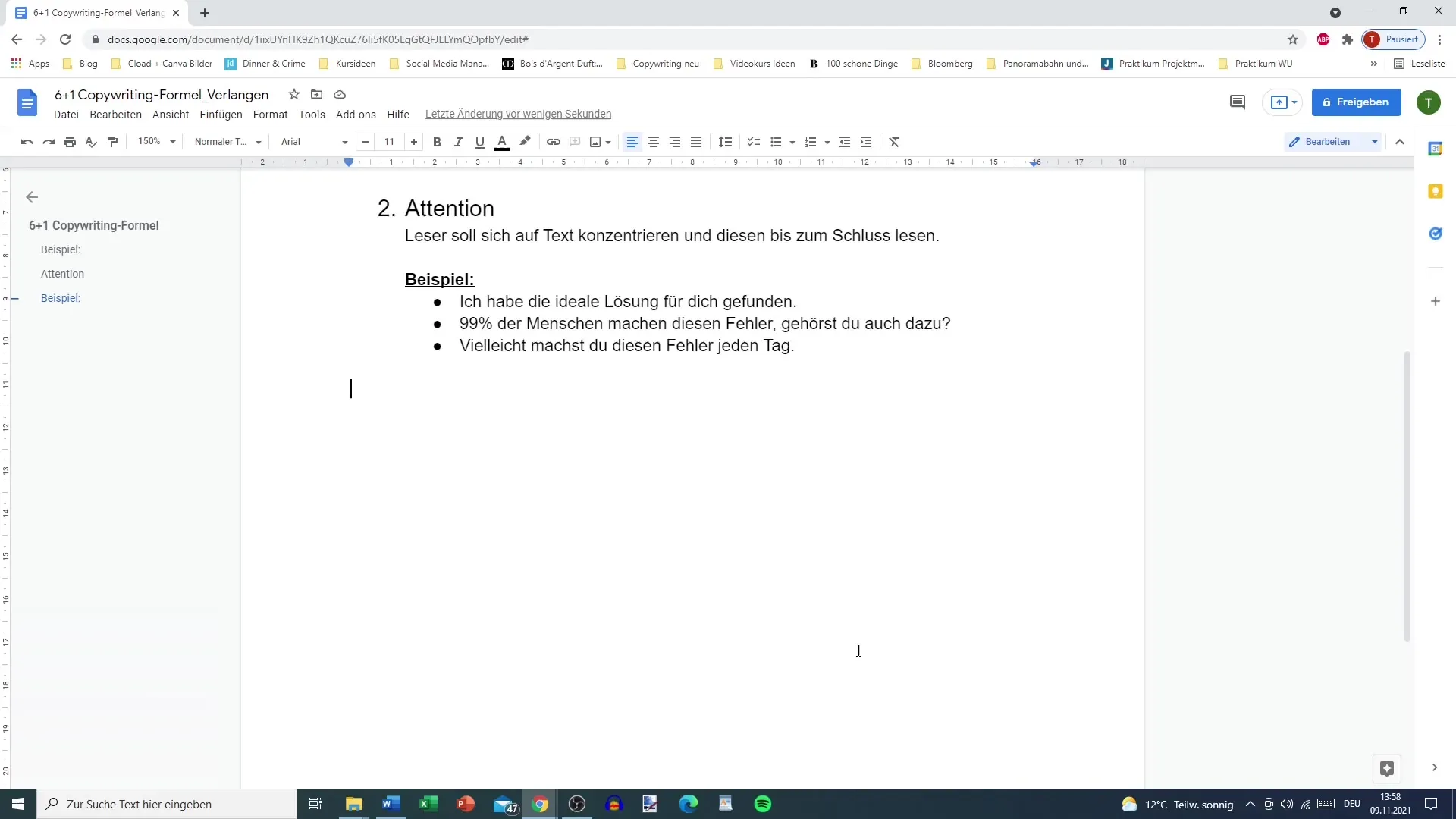Every copywriter knows the goal is to captivate readers and entice them to want to learn more about a product or service. Within the 6+1 formula, the "Desire" point is crucial to create an emotional connection. Desire is the link between interest and action. It motivates the reader to keep reading and ultimately make a decision. In this guide, you will learn how to successfully implement this point in your copywriting.
Key Insights
You create desire by picking up and deepening the reader's interest. You can set emotional incentives and awaken the need for information or products. By using clever formulations and addressing the desires of your target audience, you can prompt your readers to take action.
Step-by-Step Guide
Step 1: Capture and Enhance Interest
First, it is important that you utilize the interest already piqued. You have made the reader attentive and given them the first incentive to engage with your topic. To generate desire, you should establish a connection with their needs and wishes. Rely on emotional approaches and use situational examples that appeal to the reader and make them want to know more.

Step 2: Stimulate Needs through Solutions
In the next step, you should present the specific solutions that your product or service offers. It is important to clearly highlight how these solutions can help the reader achieve more success, happiness, or satisfaction. You can also work with statistics or address common mistakes made by your target audience. This creates a need to avoid these mistakes and take advantage of your solution.
Step 3: Create Emotional Bonds
Go a step further and try to establish an emotional connection. Clarify the positive effects the solution will have and how it will improve the reader's life. This can be done through vivid language or very concrete examples that create lively images in the reader's mind. Create scenarios in which the reader envisions themselves happily benefiting from your solution.
Step 4: Clearly Communicate Benefits and Advantages
Desire can be intensified by clearly communicating the benefits and advantages of your solution. Let the reader know specifically what they will gain by following your call to action. Use formulations that address them directly and convey the feeling that they are missing out on something valuable if they do not act. This creates pressure and motivates action.
Step 5: Combine Different Approaches
Try to communicate both desire and interest in different sentences, rather than mixing both in one sentence. For example, start with an impressive fact or a question that encourages the reader to keep reading. Then you can explain the benefits they will receive by continuing to read and ultimately taking action. This promotes the flow of arguments and keeps desire alive.
Step 6: Utilize Templates and Structures
To successfully apply the 6+1-formula, use the templates and structures provided in the first round of the course. Deploy them strategically to create desire based on interest and need building. Repetition and adaptation to your target audience are key to success here.
Summary
Desire is essential to captivate readers and prompt them to take action. By setting emotional triggers, awakening needs, and clearly communicating the benefits of your solution, you can effectively strengthen reader engagement. Use the steps presented to enhance your copywriting skills and get more out of your texts.
Frequently Asked Questions
What is the goal of desire in copywriting?The goal of desire is to motivate readers to want to keep reading and ultimately take action.
How can I effectively generate desire?By using emotional incentives, clear benefit communication, and addressing specific needs.
Should I combine interest and desire in one sentence?It is better to communicate them separately to ensure a clearer flow of arguments.
What are useful techniques for word choice?Use vivid language and concrete examples to establish emotional connections.
What role do templates play in copywriting?Templates help develop a structured approach to desire and optimize formulations.


